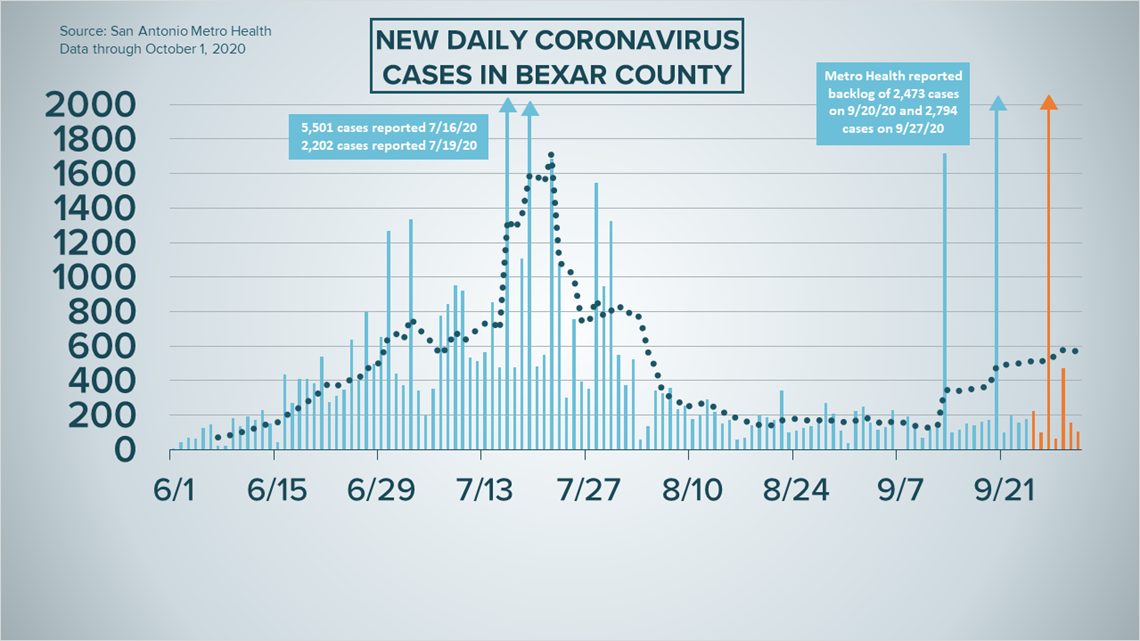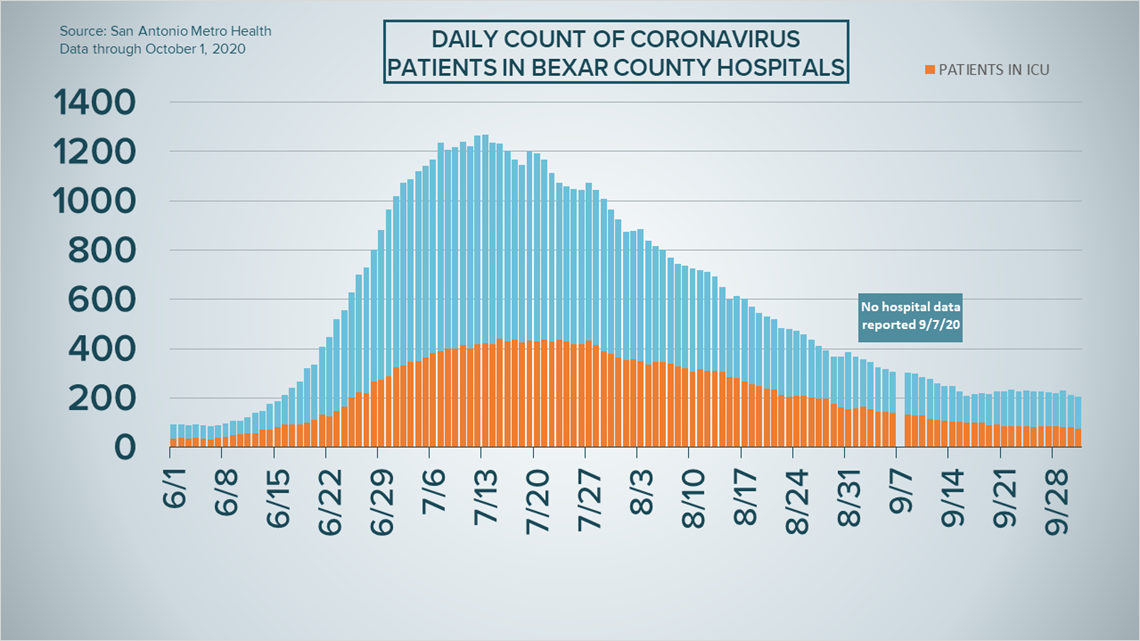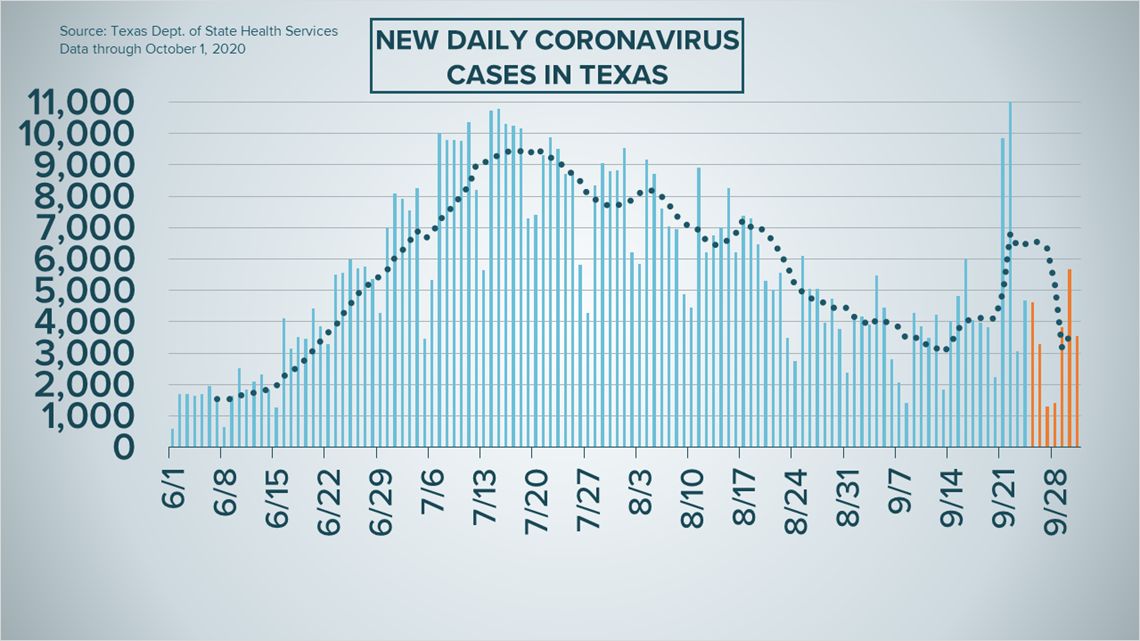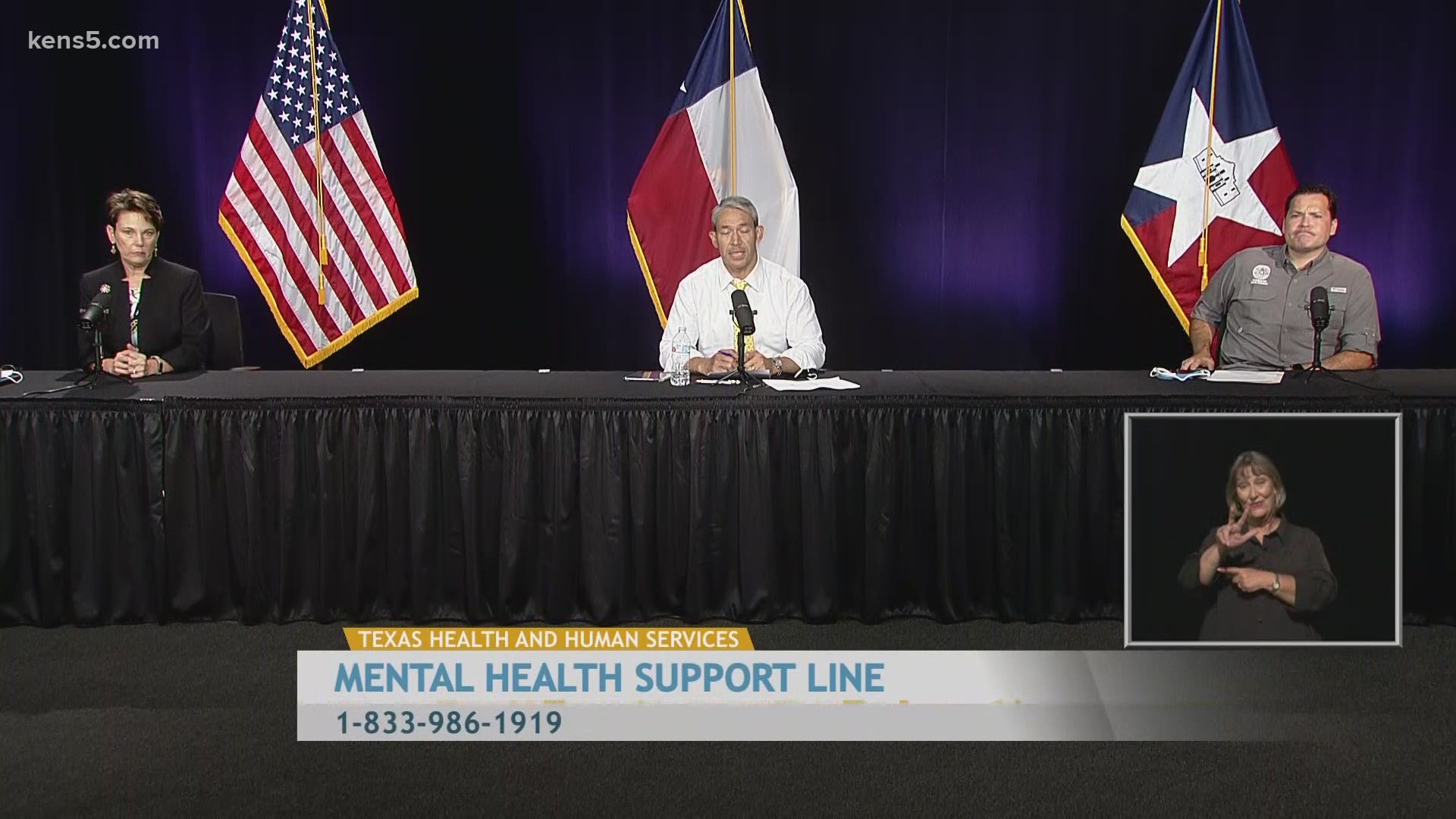SAN ANTONIO — We're tracking the latest numbers from the coronavirus pandemic in San Antonio and across Texas. Here are the latest numbers reported by Bexar and surrounding counties:
- Bexar County: 104 new cases were reported Thursday, bringing the total number for the county to 57,936. The county death toll rose to 1,138 as two new fatalities was reported.
- Comal County: The county reported 7 additional cases on Friday and no additional deaths. There have been a total of 3,493 cases of COVID-19 in the county – including 2,754 confirmed cases – while 116 county residents have died. County officials say there are 118 active coronavirus cases, and 3,259 residents are considered recovered.
- Hays County: Officials in Hays County on Thursday reported six new cases in the county and no additional virus-related deaths. As of Thursday, there are a total of 5,946 lab-confirmed cases in the county (1,299 of which are active) while the death toll remains at 55. 4,592 residents have recovered from the virus.
How Bexar County is trending
We've tracked how many coronavirus cases have been confirmed in Bexar County from the time officials began reporting cases in March 2020. The graphic below shows the number of cases since June and charts those daily case numbers along a 7-day moving average to provide a more accurate picture of the overall coronavirus case curve in our area and the direction we're trending amid the pandemic.
On Thursday, San Antonio Mayor Ron Nirenberg reported an additional 104 coronavirus cases in Bexar County, raising the total to 57,936 diagnoses since the pandemic began. The seven-day moving average for daily case totals decreased from 178 on Wednesday to 167 on Thursday.
Nirenberg also reported another two fatalities from COVID-19 complications. In all, 1,138 Bexar County residents have died from the virus.


The number of local hospitalizations decreased slightly on Thursday, with seven fewer residents receiving treatment for coronavirus symptoms. The number of patients utilizing ventilators to breathe (36) went up while the number of patients in intensive care (76) went down.


Coronavirus in Texas
The number of Texans who have tested positive for the coronavirus since the pandemic began grew by 3,534 cases on Thursday, according to the Texas Department of State Health Services.
3,234 of those are new, while the other 300 cases stem from a number of backlogs in several counties and groups of previously unreported cases in some areas. More details can be found at the top of this page.
In total, 752,501 coronavirus cases have been confirmed in Texas.


State health authorities, meanwhile, reported an additional 112 virus-related deaths on Thursday. At least 15,823 Texans have passed away from COVID-19 complications.
The state also saw a big drop in current hospitalizations. There were 154 fewer Texans receiving treatment for coronavirus symptoms, for a total of 3,190. The last time that figure was below 3,200 was Sept. 23.
The state estimates that 668,515 Texans have recovered, while 69,597 Texans remain ill with COVID-19.
Meanwhile, the Texas Education Agency updated its online coronavirus database to show that there has been 9,857 cumulative cases among staff and students across the state as of Sept. 27. More information can be found here.


Latest Coronavirus Headlines
- JBSA cancels annual Thanksgiving events due to coronavirus
- Texas updates coronavirus case totals in schools, but the data remains limited and murky
- US extends ban on cruise ships through October
- NFL postpones Titans-Steelers to later this season due to COVID-19
- US layoffs remain high as 837,000 seek jobless aid
- Medical schools, hospitals and plenty of coronavirus: How Texas became a leading COVID-19 research hub
- Mild to severe: Immune system holds clues to coronavirus reaction
- American, United cutting 32,000 jobs as coronavirus aid deal stalls in Congress
- Where does another $1,200 stimulus check stand after Pelosi, Mnuchin meeting Wednesday?
- Dr. Anthony Fauci says Americans should trust credibility of COVID-19 vaccine process
Coronavirus symptoms
The symptoms of coronavirus can be similar to the flu or a bad cold. Symptoms include fever or chills, cough, shortness of breath or difficulty breathing, fatigue, muscle or body aches, headache, new loss of taste or smell sore throat, congestion or runny nose, nausea or vomiting and diarrhea, according to the Centers for Disease Control.
Most healthy people will have mild symptoms. A study of more than 72,000 patients by the Centers for Disease Control in China showed 80 percent of the cases there were mild.
But infections can cause pneumonia, severe acute respiratory syndrome, kidney failure, and even death, according to the World Health Organization. Older people with underlying health conditions are most at risk.
But infections can cause pneumonia, severe acute respiratory syndrome, kidney failure, and even death, according to the World Health Organization. Older people with underlying health conditions are most at risk.
Experts determined there was consistent evidence these conditions increase a person's risk, regardless of age:
- Chronic kidney disease
- COPD (chronic obstructive pulmonary disease)
- Obesity (BMI of 30 or higher)
- Immunocompromised state (weakened immune system) from solid organ transplant
- Serious heart conditions, such as heart failure, coronary artery disease, or cardiomyopathies
- Sickle cell disease
- Type 2 diabetes
The CDC believes symptoms may appear anywhere from two to 14 days after being exposed.
Human coronaviruses are usually spread...
- Between people who are in close contact with one another (within about 6 feet).
- Through respiratory droplets produced when an infected person coughs, sneezes or talks. These droplets can land in the mouths or noses of people who are nearby or possibly be inhaled into the lungs.
- Some recent studies have suggested that COVID-19 may be spread by people who are not showing symptoms.
Help stop the spread of coronavirus
- Stay home when you are sick.
- Eat and sleep separately from your family members
- Use different utensils and dishes
- Cover your cough or sneeze with your arm, not your hand.
- If you use a tissue, throw it in the trash.

